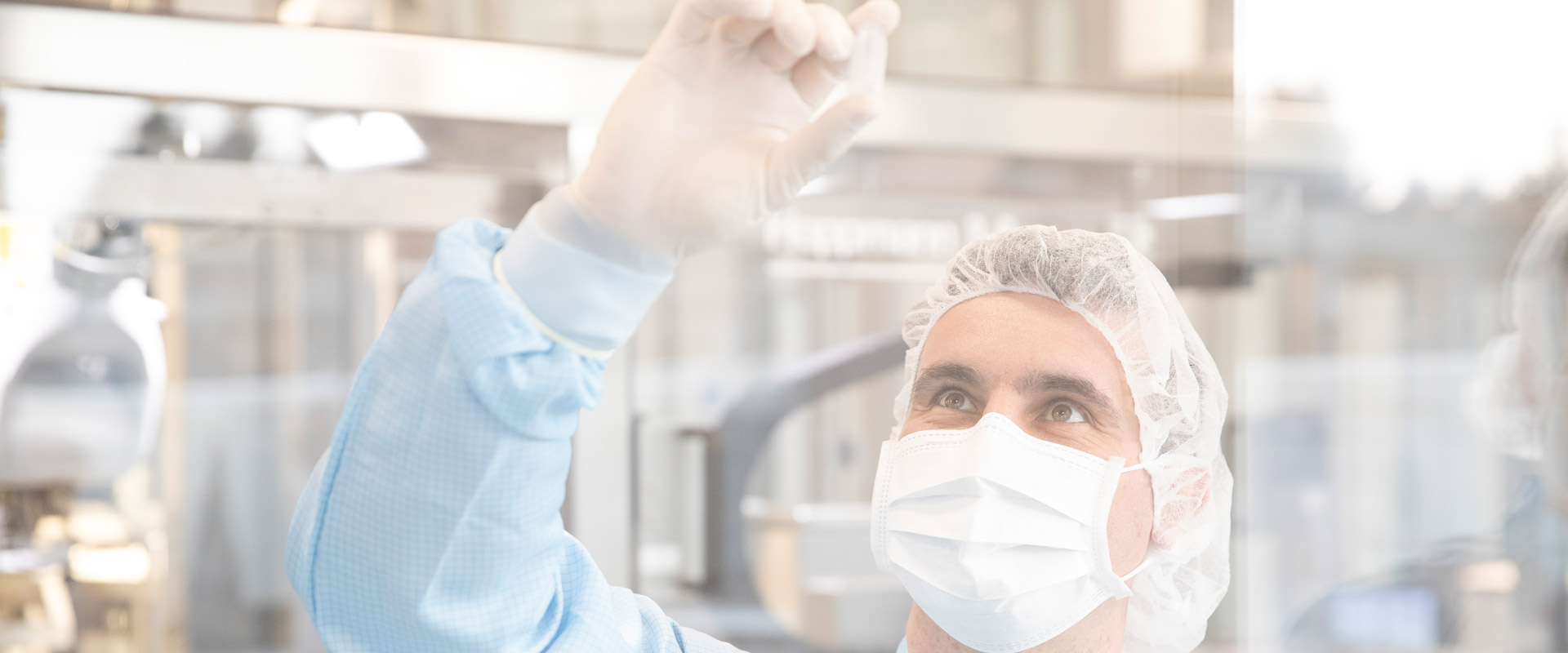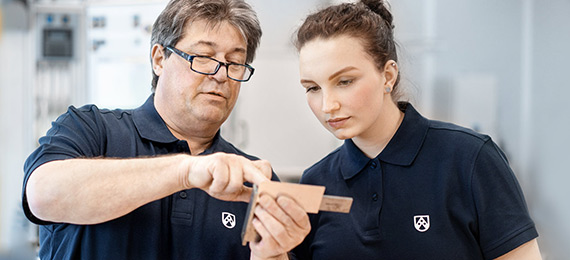Personalized healthcare
We will live longer, healthier lives in future – thanks in part to personalized medicine. But what precisely does it involve? And why does packaging play such an important role?
Let’s imagine a 65-year-old man in 2024: we’ll call him David Hamilton. He feels pretty healthy, which is in part because he has recently started an individual program of prevention to counter personal risks. He has had a medical analysis performed and is consequently aware that his risk of suffering from diabetes and high blood pressure is slightly raised. As a result, he has made some lifestyle changes and now takes a number of different tablets – to keep his health on an even keel, as his doctor has told him. There is one condition, however, that David Hamilton has suffered from throughout his life: hemophilia, a hereditary, life-threatening coagulation disorder that results in a greatly increased tendency to bleed. But he won’t have to live with it much longer: he has decided to embark on a newly approved course of gene therapy in a bid to eliminate the condition entirely. This treatment has been tailored especially to his needs, as his doctor explained. It would not help anybody else – but has been designed to be so comprehensive and low in side effects in his case, that it is set to cure him completely.
David Hamilton is benefiting from many aspects that characterize the medicine of the future: from early treatment to prevent the outbreak of disease, and from a particularly effective therapy low in side-effects that is adapted to the needs of the individual patient, instead of a one-size-fits-all approach.

Three trends: miniaturization, biologization, individualization
This is no science fiction: all of these benefits will soon be possible thanks to a radical change currently sweeping the world of medicine. “There are currently three main trends in medicine,” says Prof. Hanns-Peter Knaebel, CEO at Röchling.
The first of these is miniaturization. Its aim is to enable surgical and other procedures that have to be performed on the human body to be completed with a minimum of access-related trauma. The field of minimally invasive surgery is based on this approach. The idea is to achieve a major impact through a small incision.
The second trend is that of biologization. “In future, efforts to combine active agents or medical products with biological substances in such a way as to achieve optimum compatibility will redouble,” says Knaebel. Medical products such as implants will bear a special coating to prevent them from producing an inflammatory reaction when introduced into the body.
Smaller patient groups, greater impact
Then there is also individualization, also known as “precision medicine” and “personalized medicine”, which may constitute the most comprehensive upheaval in the healthcare market in the years to come. It does not even have to be all about therapies tailored specifically to one individual, such as the promising gene therapy to combat hemophilia, which is still in the development stage and has resulted in a complete cure in initial trials. “The main idea is to subdivide patients into ever smaller groups. If there is one person in a group, then it’s an individual therapy. But even in larger groups, the impact is often much bigger and lower in side-effects than if treatment were geared to the clinical picture alone,” says Knaebel.
Take the example of breast cancer: the tumor cells of some 20 percent of patients carry a particularly high number of HER2 protein molecules on their exterior, thus causing the tumors to grow more rapidly. Today, it is possible to determine the quantity of HER2 proteins on the tumor cells – and an antibody known as Trastuzumab is administered if the numbers are excessive. This tailored treatment can be used on one-fifth of breast cancer patients.
Röchling Medical is making an impact in the fields of digitalization and biomaterials
Because more and more of these personalized treatment options are now available, the right form of drug delivery is also assuming increasing importance. “This takes us to two cross-sectional technologies that are also of great interest to Röchling Medical,” says Knaebel. One is digitalization, the other state-of-the-art biomaterials. “We are conducting extensive research in these two fields in order to create added value in both cases – for us and for the companies with which we collaborate.” Biomaterials ensure that the body ideally fails to note the presence of any foreign matter, while digitalization just makes objects that bit more – intelligent.
It all starts with the packaging. “A Smart Pharma Pack, as we call it, supports patients in taking their medication, reminds them when to take it, monitors the dosage and warns against incorrect use,” says Knaebel. The scale of the potential is demonstrated by current statistics, which show that only 50 percent of the medication prescribed to patients undergoing many forms of long-term therapy is actually taken Prof. Knaebel sees great opportunities in this field: “We are making intensive efforts to address this problem and are conducting tests to establish which information intelligent packaging has to be able to gather, how this information can be fed into the treatment algorithm and how intelligent packaging should communicate with the patient. Research results to date have been promising. It’s not just the packaging that would be upgraded, but the benefit to the patient would be greatly enhanced too!”
Nor is this potential restricted to conventional packaging for pill boxes, inhalers and the like. Even in the case of more complex dosage systems, such as medication pumps for the administration of insulin and analgesics, “intelligent” equipment can make both doctors’ and patients’ lives significantly more straightforward and convenient.
“We start with the patient benefit and then work back toward the technology required”
But all this only constitutes a small proportion of the research efforts undertaken by Röchling in the pursuit of advances in individual medicine. The company’s specialists follow a guiding principle formulated in 1997 by former Apple CEO Steve Jobs as follows: you've got to start with the customer experience and work back toward the technology – not the other way around. “Patient benefit is the basic consideration behind all our efforts – then we work back toward the technology required,” says Knaebel.
But back to the future and to David Hamilton. Two years after his tailored treatment, he is able to celebrate his 67th birthday in excellent health. The gene therapy has proven successful to date: his hemophilia has gone and has not returned. He has made more lifestyle changes and followed advice appropriate for his health and risk profile. This has helped him to remain healthy – on a personalized basis.





